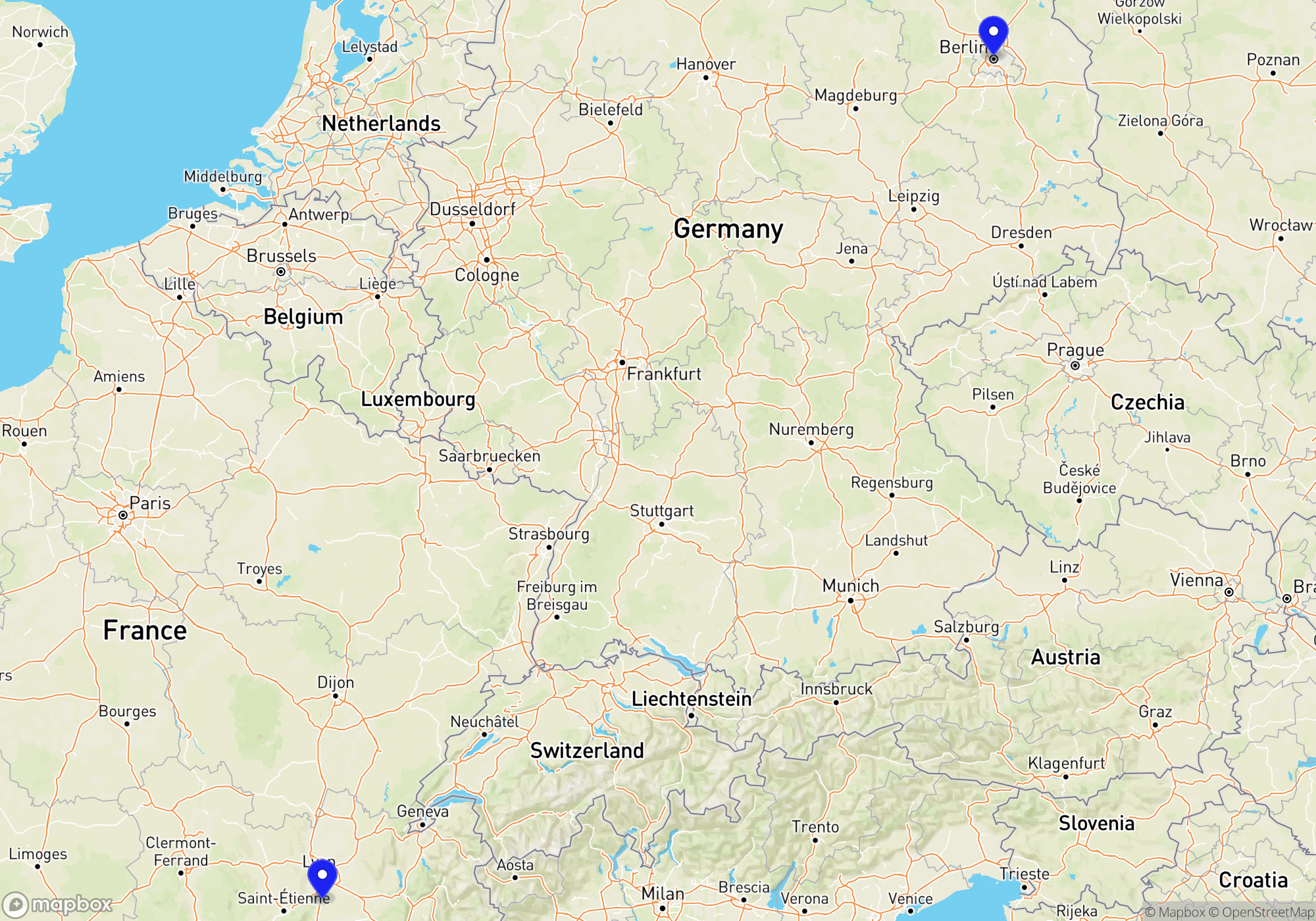
You can buy train tickets directly from the operator or through a reseller. The reseller is typically slightly more expensive (3-5%) but can provide an easier booking experience, especially if you travel with more than one operator.


These operators provide a complete journey either as a direct connection or through their partners. Even if a change of trains is involved, it’s all part of a single itinerary managed by the same train company or its partners, offering a smoother and more coordinated travel experience.

Some operators don’t run direct trains the whole way, but they serve either the departure or arrival station. In many cases, you can combine two of these operators to complete your journey by changing trains along the way. This is often a flexible and budget-friendly way to travel — especially if you’re comfortable piecing together your own itinerary.
Just keep in mind that these are separate journeys, which means a delay on the first leg could cause you to miss the second without automatic compensation or rebooking. It’s a great option for confident travelers who don’t mind a bit of extra planning.




Flixbus is primarily known as a long-distance bus service, but they also operate a train service called FlixTrain. However, as of the latest available information, FlixTrain does not operate a direct route between Vienna and Berlin. If you are traveling by FlixTrain in Germany, they generally offer an affordable alternative to traditional rail operators. The trains operated by FlixTrain are typically refurbished older models that have been given a modern touch to ensure comfort and efficiency. While the train types may vary, they usually include standard and sometimes first-class sections with spacious seating arrangements.
Amenities on FlixTrain often include free Wi-Fi, power outlets at the seats, and onboard refreshments available for purchase. There are commonly clean and regularly maintained restrooms. The focus is on providing an economical and environmentally friendly transportation option, so while the amenities may not be as luxurious as those on some high-end operators, FlixTrain offers all the essentials for a comfortable journey.
FlixTrain’s customer support services are integrated with Flixbus, renowned for its broad network of support channels. Travelers can access assistance through their website, mobile apps, and social media channels. Additionally, customer service is available via phone or email. Their website and app offer user-friendly interfaces to make booking and managing reservations straightforward.
For a first-time traveler, it’s vital to check the current routes FlixTrain offers, as these are subject to change based on operational decisions and demand. Since FlixTrain’s presence is expanding, it’s always worthwhile to explore if new routes have been added that might suit your travel plans. Remember to check the specific services available on your chosen route, as amenities can sometimes differ between specific trains and journeys.
The Interrail Global Pass is valid for travel from Vienna to Berlin if the traveler is a resident of Austria or Germany, as it allows international travel. The Interrail One Country Pass for Austria or Germany would not be valid for this journey, as it covers only domestic travel within a single country. The Eurail Pass is valid for this trip for travelers who are not residents of the EU, allowing for international train travel between Vienna and Berlin.
From any of Berlin’s train stations, getting around the city using local transportation is convenient and efficient. The U-Bahn (subway) and S-Bahn (commuter trains) are the backbone of Berlin’s public transit network, covering extensive routes that connect major attractions and neighborhoods. Tickets for the U-Bahn and S-Bahn are interchangeable and must be validated before boarding. Trams are another vital mode, especially in the eastern parts of the city, offering a scenic and leisurely travel option. For those preferring road travel, buses frequently operate throughout Berlin, including night buses that run when other services decrease. Taxis are readily available and can be hailed on the street or booked via apps or phone, often a convenient option for direct trips or when public transport is less frequent. Ridesharing services like Uber are also operational in Berlin, providing an app-based, door-to-door service. Cycling is popular too, with abundant rental options and dedicated bike lanes, a great way to see the city at your own pace. Tickets for public transport can be purchased at kiosks, ticket machines, or through mobile apps, ensuring ease of access as you explore the vibrant city.
Berlin serves as a major hub in Europe’s extensive rail network, offering numerous domestic and international connections. Domestically, one of the most popular routes is Berlin to Munich, serviced by high-speed ICE trains that cover the distance in about four hours. Another common domestic journey is to Hamburg, taking approximately two hours with frequent services.
For international travel, Berlin connects to several cities across Europe. One popular route is to Prague, which is about a four and a half-hour journey by direct EuroCity trains, offering scenic views of eastern Germany and the Czech Republic. Trains also connect Berlin to Warsaw, with EuroCity services taking about six hours to reach the Polish capital, providing an important link between Germany and Poland. Another key route is to Amsterdam, where the journey typically takes around six hours via Intercity and ICE trains, making it a convenient link between Germany and the Netherlands.
Additionally, Berlin links to Vienna, with direct ICE and Railjet trains, covering the distance in roughly eight hours, and offering comfortable and efficient service. For those traveling to Zurich, direct night trains are available, providing a sleep-friendly option on the approximately twelve-hour trip. Each of these connections offers reliable, frequent services, making train travel a popular choice for both business and leisure travelers in Europe.
The best time to visit Berlin is generally late spring (May to June) and early autumn (September to early October). During these months, the weather is pleasantly mild, making it ideal for exploring the city outdoors without the extremes of summer heat or winter chill. Spring brings blossoming parks and gardens, while autumn offers beautiful foliage, both making for picturesque train arrivals into the city. Additionally, these periods tend to be less crowded compared to the peak summer months, leading to more reasonable accommodation and travel prices. May and June have various cultural events, such as the Carnival of Cultures, offering vibrant celebrations and activities. In early October, Berlin hosts the Festival of Lights, a visually stunning event with light installations across the city. Traveling during these times allows visitors to enjoy a lively atmosphere and participate in significant festivals without the inflated prices and busy atmosphere of the peak summer tourism season.
When traveling from Vienna to Berlin by train, it’s important to pack both essentials for the journey and items you’ll need upon arrival. Ensure you have a valid passport or EU ID card, as these are necessary for traveling across borders within the Schengen Area. Keep your train ticket easily accessible, as you may need to show it multiple times during the journey. Portable chargers and power banks are handy for keeping your devices powered on during the train ride; while Vienna and Berlin typically use the same type of electrical outlets (Type C and F), bring a power adapter if your device plugs differ. Comfortable clothing and a lightweight travel blanket or shawl will help you stay cozy. Noise-canceling headphones and a neck pillow can make the ride more pleasant. Bring snacks and a refillable water bottle to stay hydrated and save money. Don’t forget any personal medications you may need and keep them in their original packaging for security reasons. A guidebook or downloaded map app of Berlin can help you navigate once you arrive. Cash in euros will be useful for smaller purchases, although credit cards are widely accepted. A small daypack or comfortable bag will help you carry essentials while exploring the city. Bring your camera or smartphone for photos, along with necessary chargers and backup storage. Lastly, ensure you have a travel insurance policy that covers potential issues during your trip.